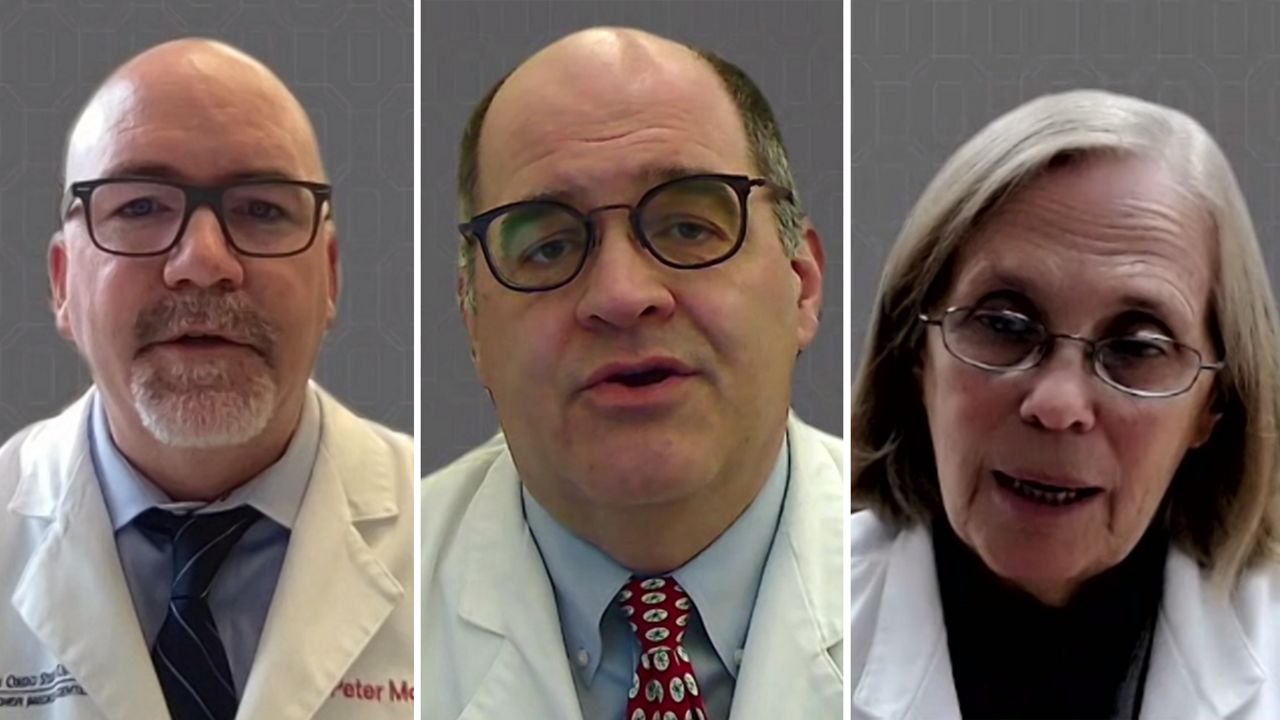COLUMBUS, Ohio — Shortly after the omicron variant was identified, Ohio State Wexner ramped up its sequencing of COVID-19 samples, officials said Wednesday.
What You Need To Know
- The omicron variant has not been detected in Ohio as of Wednesday
- Ohio State Wexner said it has two labs sequencing COVID-19 samples
- The medical center said the delta variant is driving Ohio's virus surge
Since then, the medical center’s labs have analyzed 1,300 samples, and none of them have been the new variant. Omicron has yet to be detected anywhere in the state, officials said.
“We have made a concerted effort across Ohio State and the Ohio State Wexner Medical Center to have clear line of sight on new variants that may come in,” Chief Scientific Officer Peter Mohler said.
In addition to having two laboratories focused on sequencing for variants, he said Ohio State has “massive teams” working on getting answers to unknowns about the variants, including whether it’s more infectious and if it can better escape natural or vaccine-induced immunity.
Mohler said the sequencing work is critical, as it will help guide contact tracing of initial cases and inform decisions about whether additional restrictions are needed.
Earlier Wednesday, Pfizer announced that two-doses of its vaccine offer much less protection against omicron compared to the original strain of the virus, but reported that a booster dose could offer similar levels of protection against omicron to the immunity generated from the two-dose vaccine series against the original strain.
Mohler said it will be important to look at primary data that’s peer-reviewed as scientists race to learn more about omicron.
“While it is important to understand what's happening and what's coming from some of the pharmaceutical companies, it's also just as important that independent laboratories are verifying and validating that data,” Mohler said.
During a virtual news conference, three Ohio State experts discussed the COVID-19 surge impacting the state, which they said is still being driven by the delta variant.
“What we've yet to see with this surge in cases is where that peak is. Is that peak soon? Is that peak another month out? We don't know yet,” Chief Clinical Officer Dr. Andrew Thomas said.
Nearly 4,300 patients were hospitalized with COVID-19 as of Wednesday's update, the highest level since Jan. 6. When hospitalizations were at a record high on Dec. 15, 2020, Ohio had 5,308 virus patients.
Seven-day average COVID-19 cases in Ohio are at 7,655, which is also the highest point since last January. Thomas said Ohio’s hospitals will likely be dealing with high-patient volumes for some time because cases typically drive hospitalizations a week or two later.
Despite Ohio’s relatively low overall vaccination rate, Thomas said the strong vaccine uptake among seniors in the state has made an impact limiting the strain on hospitals from this surge.
But Thomas said the state would be in a much better spot if more residents in their 40s and 50s were vaccinated. More than a quarter of the patients admitted to Ohio hospitals with COVID-19 in the last week were between the ages of 40 and 59.
Dr. Susan Koletar, director of the division of infectious diseases, said experts are still unsure why omicron appears to be so contagious. Cautioning that data is limited, Koletar said there is encouraging early information that illness from the omicron variant may tend to be more mild.
“There was a report out of South Africa with just 42 patients — 70% of them didn't even require supplemental oxygen,” she said.
Mohler said that while news about the variant can be frightening, it’s still too early to know the what course the variant will take.
“It's really important — again, we're now on the 15th letter of the Greek alphabet — that we don't overreact every time we see a new variant,” he said.



